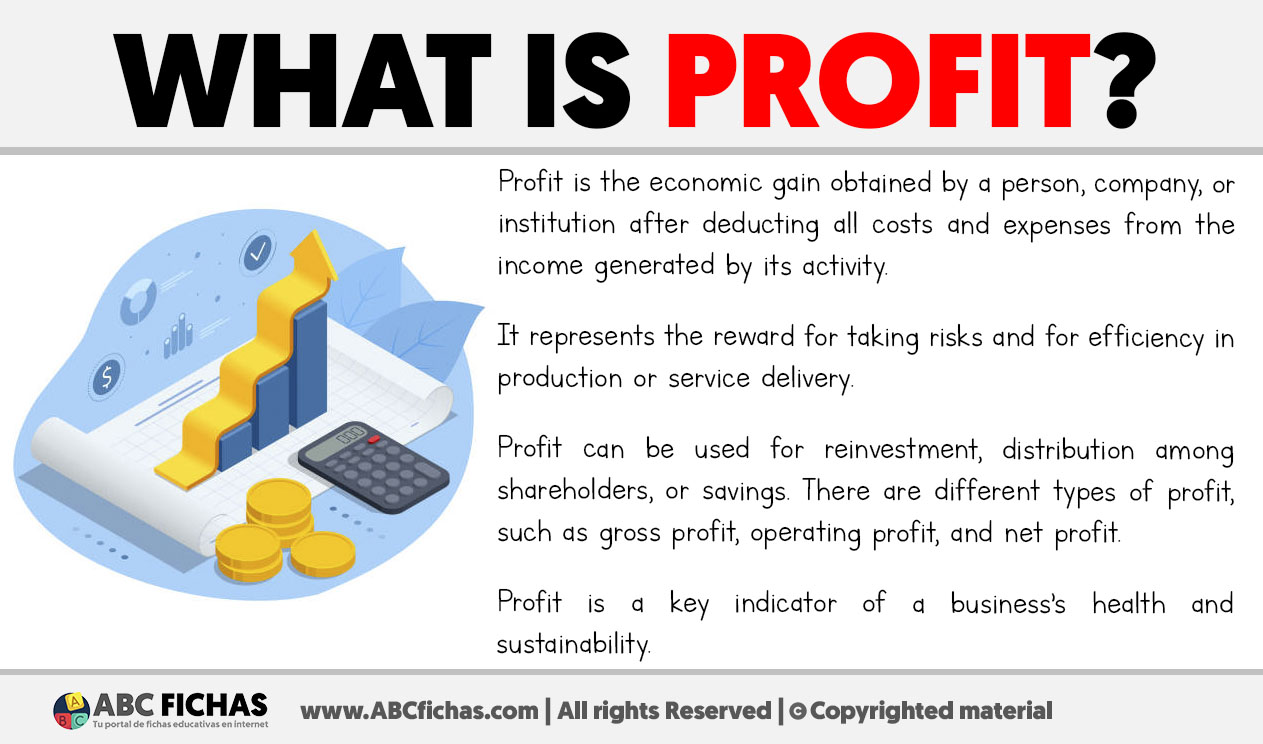Profit is the financial gain earned by an individual, business, or organization after subtracting all costs and expenses from the total income generated. It represents the surplus that remains once wages, materials, rent, taxes, and other expenses are covered. Profit is one of the key indicators of economic success, as it shows whether an activity is sustainable and rewarding.

There are different types of profit. Gross profit is the difference between revenue and the direct costs of producing goods or services. Operating profit goes further, subtracting operating expenses such as salaries, utilities, and rent. Net profit is the final figure after all expenses, taxes, and interest have been deducted. Each level of profit gives valuable insight into financial performance.
Profit also acts as a reward for risk-taking. Entrepreneurs invest money, time, and energy with no guarantee of success, and profit compensates for those risks. Additionally, profit enables reinvestment in the business, distribution of dividends to shareholders, and savings for future growth.
A company’s ability to generate consistent profit is vital for its survival and expansion. It not only ensures financial stability but also reflects efficiency, competitiveness, and the organization’s capacity to deliver value in the long run.